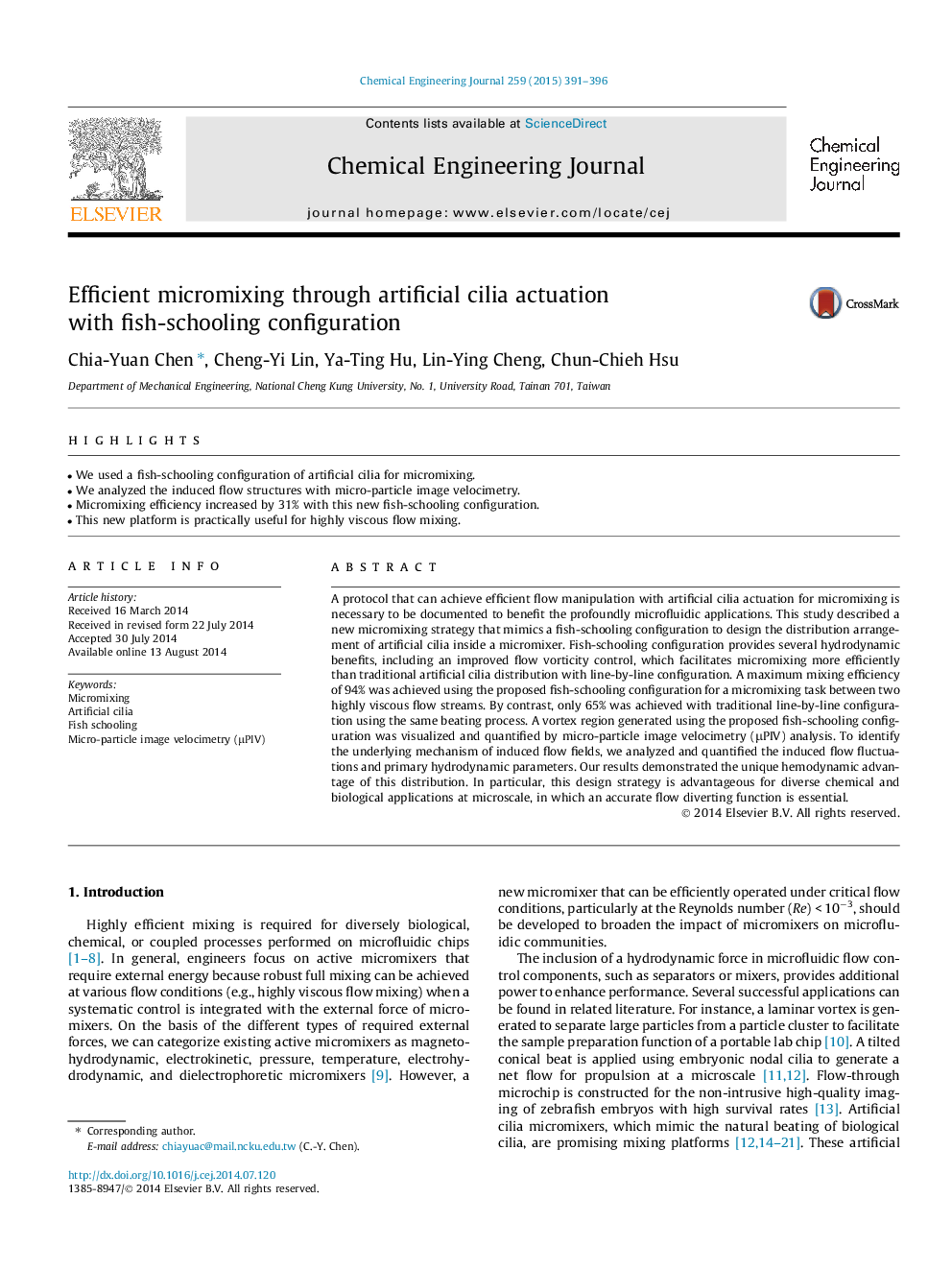| Article ID | Journal | Published Year | Pages | File Type |
|---|---|---|---|---|
| 6586195 | Chemical Engineering Journal | 2015 | 6 Pages |
Abstract
A protocol that can achieve efficient flow manipulation with artificial cilia actuation for micromixing is necessary to be documented to benefit the profoundly microfluidic applications. This study described a new micromixing strategy that mimics a fish-schooling configuration to design the distribution arrangement of artificial cilia inside a micromixer. Fish-schooling configuration provides several hydrodynamic benefits, including an improved flow vorticity control, which facilitates micromixing more efficiently than traditional artificial cilia distribution with line-by-line configuration. A maximum mixing efficiency of 94% was achieved using the proposed fish-schooling configuration for a micromixing task between two highly viscous flow streams. By contrast, only 65% was achieved with traditional line-by-line configuration using the same beating process. A vortex region generated using the proposed fish-schooling configuration was visualized and quantified by micro-particle image velocimetry (μPIV) analysis. To identify the underlying mechanism of induced flow fields, we analyzed and quantified the induced flow fluctuations and primary hydrodynamic parameters. Our results demonstrated the unique hemodynamic advantage of this distribution. In particular, this design strategy is advantageous for diverse chemical and biological applications at microscale, in which an accurate flow diverting function is essential.
Related Topics
Physical Sciences and Engineering
Chemical Engineering
Chemical Engineering (General)
Authors
Chia-Yuan Chen, Cheng-Yi Lin, Ya-Ting Hu, Lin-Ying Cheng, Chun-Chieh Hsu,
